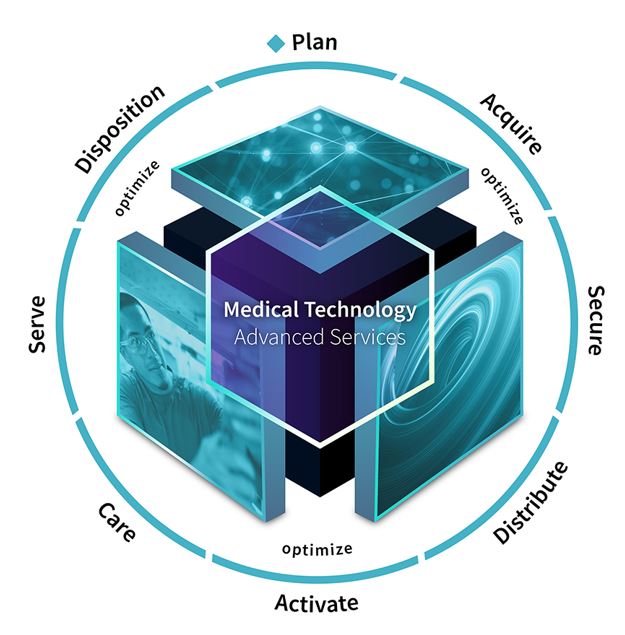What are the costs of operating without a unified medical technology strategy?
What if the very technology designed to save lives is instead draining resources and compromising the patient experience? For numerous health systems, fragmented medical technology strategies can pose more than just a minor inconvenience; they can create a substantial financial strain that undermines operational efficiency and can adversely impact patient visits. This disjointed approach can lead to increased costs and fewer positive patient takeaways regarding their healthcare journey.
In “Healthcare's Silent Crisis”, the idea that disjointed technology management can lead to inflated costs, operational disruptions, and potentially increased security vulnerabilities, which can potentially threaten the integrity of healthcare delivery, is discussed. As health systems navigate these complexities, the value of a cohesive, vendor-agnostic approach becomes undeniable.
How fragmented technology may undermine a unified medical technology strategy in health systems
To understand the impact of fragmented medical technology management, it is crucial to recognize the challenges faced by health systems that lack a unified technology strategy, which is one that integrates the organization’s technology and IT resources to align with overall business objectives.
Increased maintenance costs
Managing multiple vendors for different equipment may lead to inefficient service contracts, potentially resulting in higher overall maintenance expenses. The article “Addressing the Challenges of Care Coordination in Fragmented Healthcare Systems” highlights that fragmented systems can lead to duplicate records and inconsistent patient information, complicating maintenance and support.
The lack of predictive maintenance can lead to unexpected repair costs, as facilities may remain unaware of equipment issues until failures occur.
Equipment failures may lead to unplanned downtime, potentially impacting patient care.
Security and compliance risks
Outdated software and a lack of regular cybersecurity updates can make medical equipment vulnerable to cyber threats. According to “Data Fragmentation: The Key Healthcare Challenge of our Time,” fragmented systems can lack a cohesive strategy, potentially increasing the risk of data breaches.
As stated in “Non-Compliance Fines and Sanctions: Why It’s More Expensive Not to Comply with Regulations”, regulatory non-compliance due to inconsistent technology management can lead to fines and penalties, further straining financial resources.
Data breaches in medical devices can harm the institution's reputation, resulting in a loss of trust among patients and stakeholders.
Operational inefficiencies in healthcare technology
Disconnected systems, such as imaging equipment, can slow down workflows and disrupt scheduling, making it difficult for healthcare providers to deliver timely care. In “Patients’ and Providers’ Views on Causes and Consequences of Healthcare Fragmentation in the Ambulatory Setting: a Qualitative Study,” it is shown that fragmented healthcare systems can lead to patient dissatisfaction due to delays and errors in care delivery. In addition, in “Poor Asset Management: Understanding Its Consequences and Path to Improvement”, it’s shown that inconsistent asset tracking may result in poor equipment utilization, as staff may struggle to locate necessary devices when needed. A lack of real-time visibility into equipment status may increase downtime and may delay care delivery, which can ultimately affect the patient experience and operational efficiency. By tackling these challenges, health systems can start to unlock the advantages of a unified technology strategy. This approach may result in a better patient experience, increased operational efficiency, and lower costs.
The MTAS framework: A vendor-agnostic, unified medical technology strategy
To successfully address the challenges of fragmented medical technology management, health systems require a holistic solution that not only resolves existing issues but also equips them for future needs. This proactive approach helps ensure that they can adapt to evolving demands in healthcare technology. Medical Technology Advanced Services (MTAS) by GE HealthCare offers a structured, lifecycle-based approach to medical technology management, helping healthcare providers transition from reactive problem-solving to a strategic, future-ready model. By integrating eight essential disciplines into a unified, vendor-neutral framework, MTAS helps health systems to maximize their technology investments. This integration can ultimately lead to improved patient experiences and operational efficiencies.
What are the eight integrated disciplines of MTAS?
Plan
Health systems often struggle to align technology investments with operational goals. This misalignment can lead to wasted resources and missed opportunities for improvement. The planning phase of MTAS, developed by GE HealthCare, addresses this challenge through strategic technology assessments. These assessments evaluate both current assets and future needs to ensure effective technology management. This aligns medical technology with operational objectives, maximizing investment value through comprehensive lifecycle planning. By proactively identifying gaps and opportunities, health systems can make informed decisions that enhance overall efficiency and effectiveness.
Acquire
Inefficient procurement processes can lead to inflated costs. They also misalign technology with clinical needs. This may result in suboptimal patient experience. The acquisition aspect of MTAS helps health systems create cost-effective sourcing strategies for medical technology procurement. MTAS helps ensure that purchases align with clinical and operational priorities. As a result, organizations can avoid unnecessary expenditures. This alignment helps to ensure that the right technology is available when and where it is needed most. Consequently, healthcare delivery can become more efficient and effective.
Secure
As cyber threats evolve, health systems face risks from outdated software and inconsistent cybersecurity measures. The security aspect of MTAS from GE HealthCare addresses these vulnerabilities. It implements robust cybersecurity measures to help protect medical devices from digital threats. This includes regular software updates and proactive security assessments. These actions help ensure compliance with regulatory standards.
By prioritizing security, health systems can safeguard patient data. This approach helps maintain trust with patients. Additionally, it helps to avoid costly breaches that could harm their reputation and financial standing.
Distribute
Inefficient deployment of medical equipment can lead to underutilization and operational bottlenecks. Consequently, this can affect patient experience. The distribution aspect of MTAS focuses on managing the deployment of medical equipment across facilities. This helps ensure optimal usage. By improving visibility into asset locations and availability, health systems can streamline workflows. As a result, they can reduce delays in care delivery. This strategic management of resources can not only enhance operational efficiency but can also help ensure that healthcare providers have access to the necessary tools to deliver high-quality care.
Activate
Disconnected systems can hinder seamless integration and activation of technology within healthcare networks. This can lead to workflow disruptions and inefficiencies. The activation aspect of MTAS helps ensure smooth technology integration and activation by providing technical expertise tailored to the specific needs of each health system. This includes training staff on new technologies and optimizing clinical workflows to enhance patient experience. By facilitating a seamless transition to new systems, MTAS helps health systems maximize the benefits of their technology investments.
Care
Unplanned downtime from equipment failures disrupts operations and increases costs, creating a ripple effect throughout the health system. MTAS addresses this challenge by implementing predictive and preventive maintenance strategies designed to reduce downtime. By utilizing data analytics and monitoring tools, MTAS helps to enable health systems to anticipate equipment needs and schedule maintenance proactively. This approach maximizes equipment uptime, helping to ensure that healthcare providers can deliver uninterrupted services to patients.
Serve
Inadequate customer support can lead to prolonged equipment issues and dissatisfaction among healthcare providers, which can ultimately impact patient experiences. The service discipline of MTAS enhances customer support through remote monitoring and AI-driven diagnostics, allowing for real-time problem resolution and performance optimization.
Designed to ensure continuous improvement in medical equipment performance, MTAS helps health systems maintain high standards of care and operational efficiency. This supports a culture of excellence within the organization.
Disposition
Inefficient end-of-life planning for medical devices complicates transitions and increases costs. This creates challenges for health systems as they manage their assets. The disposition discipline of MTAS helps health systems develop effective end-of-life strategies. These strategies include resale, recycling, or responsible disposal of medical devices. By facilitating these transitions, MTAS helps organizations manage equipment lifecycle changes efficiently, reducing waste and helping to ensure compliance with environmental regulations. This strategic approach helps not only to minimize costs but also promotes sustainability within the healthcare sector.
Adopting the MTAS framework from GE HealthCare enables health systems to tackle the critical challenges of fragmented medical technology management. This approach paves the way for improved operational efficiency, enhanced patient experiences, and increased security measures.
How to future-proof medical technology management
In the article “The Problem of Fragmentation and the Need for Integrative Solutions,” it is discussed how healthcare providers who operate with fragmented medical technology strategies can face significant risks. Consequently, these potential risks can jeopardize both patient experience and organizational sustainability. The lack of a cohesive strategy can lead to inefficiencies and increased costs. Therefore, it is crucial for healthcare organizations to adopt integrated approaches to help mitigate these challenges.
These challenges can manifest as rising costs from inefficient management of multiple vendors and equipment. Security vulnerabilities may arise from outdated software and inconsistent cybersecurity measures. Operational inefficiencies disrupt workflows, while compliance challenges can result in regulatory penalties.
Medical Technology Advanced Services (MTAS) from GE HealthCare emerges as a proactive, vendor-agnostic solution designed to address critical issues head-on. MTAS integrates strategic planning, lifecycle management, and robust cybersecurity measures into a cohesive framework. This framework helps to optimize medical technology investments.
By adopting a unified approach, hospitals can lower maintenance costs and minimize equipment downtime. This helps ensure that healthcare providers have access to the tools they need when they need them. Furthermore, MTAS may enhance cybersecurity and regulatory compliance, helping protect sensitive patient data and safeguarding the institution's reputation against potential breaches and penalties.
In addition to these immediate benefits, MTAS helps foster operational efficiency. It helps to improve equipment utilization, allowing healthcare organizations to streamline processes and allocate resources more effectively. As a result, the patient experience may be enhanced, helping to position health systems for long-term success in an ever-evolving healthcare landscape.
The adoption of the MTAS framework from GE HealthCare can meaningfully benefit healthcare providers. It helps them navigate the complexities of modern medical technology management. By using a comprehensive, integrated approach, organizations can help mitigate risks and enhance operational performance, which ultimately supports better patient experiences. The time to act is now. Transform your medical technology strategy to help secure a healthier future for your organization and the communities you serve.


